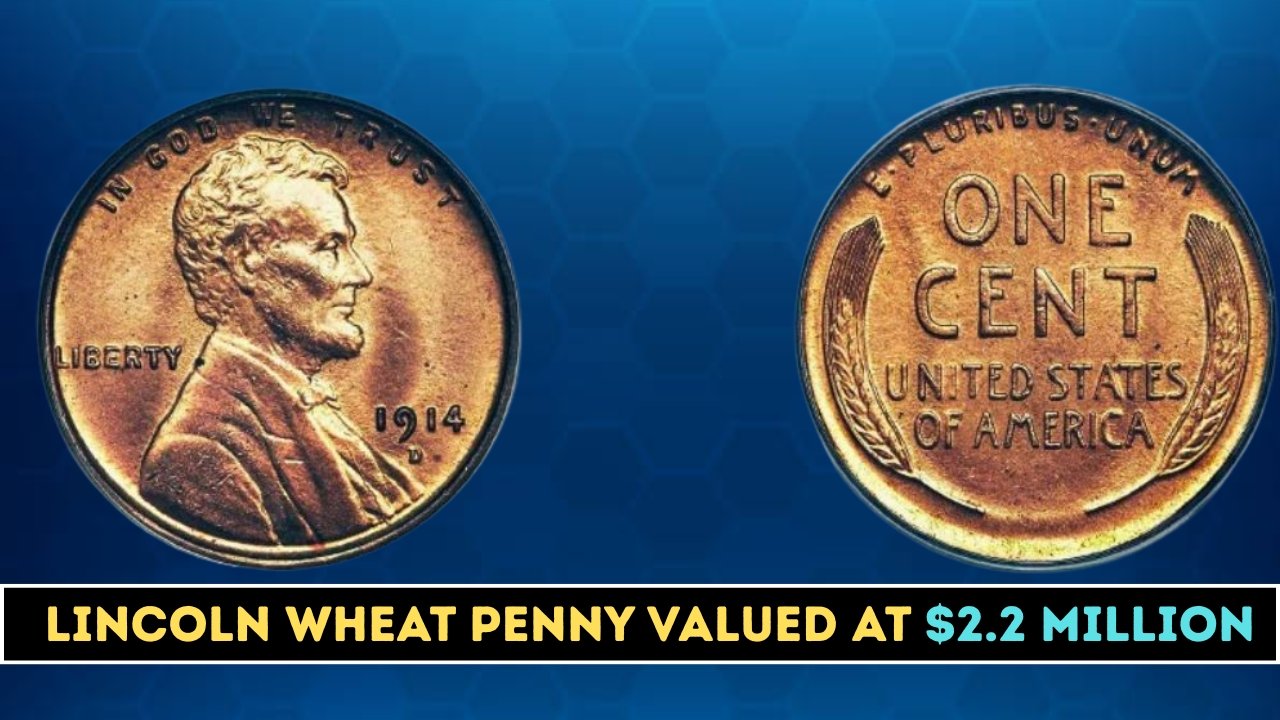If you’ve ever tossed a penny into a jar without thinking twice, you might want to pause for a moment. Somewhere out there, mixed among countless copper coins, could be a Lincoln Wheat Penny valued at a jaw-dropping $2.2 million — and yes, it might still be in circulation. Sounds unbelievable, right? But as coin collectors know, rare pennies have a funny way of showing up in the most ordinary places — at grocery counters, in parking lot change, or even lying forgotten in old drawers.
Let’s take a deep dive into what makes this Lincoln Wheat Penny so incredibly valuable, how to recognize it, and why it’s capturing the attention of both coin enthusiasts and everyday people hoping to stumble upon a fortune in their spare change.
The Story Behind the Lincoln Wheat Penny
The Lincoln Wheat Penny, first minted in 1909, holds a special place in American history. It was introduced to honor the 100th anniversary of Abraham Lincoln’s birth — the first U.S. coin to feature a real person’s face. Designed by Victor David Brenner, this penny featured Lincoln’s iconic profile on the obverse (front) and two stalks of wheat on the reverse — hence the name “Wheat Penny.”
Now, here’s where things get fascinating. Not all Lincoln Wheat Pennies are created equal. Over the decades, several versions were minted in different years, with small variations — some errors, some experimental strikes — and those rare variants are worth more than their weight in gold.
Among these, the Lincoln Wheat Penny valued at $2.2 million is one of the rarest of them all.
What Makes the $2.2 Million Wheat Penny So Special?
The $2.2 million Lincoln Wheat Penny isn’t just valuable because of age — it’s valuable because of rarity, minting errors, and condition.
This specific coin is believed to be a 1943 Lincoln Wheat Penny that was accidentally struck on bronze planchets instead of zinc-coated steel. Here’s the backstory: during World War II, copper was reserved for ammunition and other wartime needs. So, in 1943, the U.S. Mint switched to using zinc-coated steel for pennies.
However, a few bronze planchets (leftovers from 1942) accidentally got mixed into the minting machines — creating a small batch of 1943 Bronze Wheat Pennies. Only a few dozen are known to exist, and most have been carefully cataloged. But coin experts believe a handful might still be floating out there, unnoticed.
That’s what makes this particular penny worth up to $2.2 million, depending on condition and provenance.
How to Identify the $2.2 Million Lincoln Wheat Penny
If you’re thinking, “Wait a minute, could I have one?” — you’re not alone. Here’s what to look for:
| Feature | Details |
|---|---|
| Year | 1943 |
| Metal | Bronze (Copper) – NOT silver or steel |
| Color | Reddish-brown (copper tone), not gray or silver |
| Magnet Test | Non-magnetic (if it sticks to a magnet, it’s steel and not valuable) |
| Mint Marks | May show “D” (Denver), “S” (San Francisco), or no mark (Philadelphia) |
| Weight | Around 3.11 grams (regular 1943 steel pennies weigh only 2.7 grams) |
A simple way to check? Try the magnet test first. If your 1943 penny doesn’t stick to a magnet, get it professionally appraised — because you might just be holding a small fortune in your palm.
Why It Might Still Be in Circulation
You might wonder, “If it’s worth millions, how could it still be out there?”
Well, it’s simple. Many people just don’t check their change. Over the years, millions of Wheat Pennies have circulated unnoticed, and collectors have found rare coins in the most unexpected spots — thrift store jars, garage sales, and even under couch cushions.
Some owners, unaware of their coin’s rarity, may have spent it decades ago. Others may have tucked it away in a family collection, forgotten until someone rediscovers it. So, yes, the $2.2 million Lincoln Wheat Penny could very well be sitting in someone’s kitchen drawer right now.
Record Sales and Collector Buzz
One verified 1943 Bronze Lincoln Penny sold for $1.7 million in 2010, and another fetched nearly $2.2 million in a private sale later on. These astronomical prices have turned this tiny copper coin into a collector’s dream.
Even the 1943 steel pennies, while common, can fetch a small premium if in mint condition — but the bronze ones are the holy grail. The buzz around these coins keeps growing as collectors hunt for that elusive piece that could make them millionaires overnight.
Let’s be honest — the odds of finding a $2.2 million penny are slim, but not impossible. That’s what makes it so thrilling. Each time you get change, each time you clean out an old coin jar, there’s a tiny chance you might discover history — and wealth — hiding in plain sight.
So next time you see a Lincoln Wheat Penny, don’t just toss it aside. Examine it closely. Because, to be fair, you might just be holding one of the rarest coins in the world.
FAQs
1. Why is the 1943 Lincoln Wheat Penny so valuable?
Because a few were mistakenly struck in bronze instead of steel during World War II, making them extremely rare.
2. How can I tell if my 1943 penny is valuable?
Check the color (it should look copper), the weight (around 3.11 grams), and try the magnet test (it should not stick).
3. Where can I sell a rare Lincoln Wheat Penny?
You can approach certified coin dealers, auction houses like Heritage Auctions, or online platforms specializing in rare coins.
4. Are all Wheat Pennies valuable?
No, most are worth only a few cents to a few dollars, but rare varieties — like the 1909-S VDB or 1943 Bronze — are worth thousands or millions.
5. What’s the best way to preserve a valuable penny?
Avoid cleaning it. Store it in a coin holder or protective case to prevent damage or oxidation.

